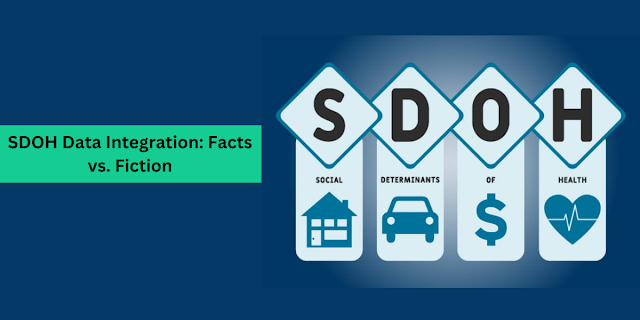SDOH Data Integration: Facts vs. Fiction
Social Determinants of Health encompass the various social and economic factors that influence an individual's health and well-being. It includes aspects such as access to healthcare, education, housing, employment, and community support. SDOH data integration is the process of incorporating this valuable information into healthcare systems and strategies to improve patient outcomes.
Key Domains of Social Determinants of Health (SDOH)
SDOH determinants are often categorized into five key
domains:
- Economic
Stability
- Education
- Social
and Community Context
- Healthcare
Access
- Neighborhood
and Built Environment
Each of these domains plays a crucial role in shaping an individual's overall health. Recognizing the impact of these factors is the first step toward improving healthcare outcomes.
The Importance of SDOH Data Integration
It is a powerful tool that allows healthcare professionals to gain insights into their patients' lives beyond medical conditions. It offers a holistic view of a patient's circumstances, enabling healthcare providers to tailor their care plans to address not only medical issues but also the social factors affecting health.
Some Common Misconceptions About SDOH Data Integration
Myth #1: It is Only for Healthcare Providers
Fact: It is not limited to healthcare providers. Various stakeholders, including government agencies, researchers, and community organizations, can benefit from it. It's a collaborative effort to improve public health.
Myth #2: SDOH Data is Inaccurate and Unreliable
Fact: While challenges exist in collecting and
updating SDOH data, it is not inherently inaccurate. Advances in data
collection methods and technology have enhanced the reliability of information.
Fact: Implementing this system may have upfront costs, but the long-term benefits far outweigh the expenses. It can lead to cost savings through preventive care and more effective resource allocation.
The Key Benefits
The integration of SDOH data offers several
advantages, including:
- Enhanced
patient care and outcomes
- Targeted
interventions and preventive measures
- Improved
population health management
- Reduced healthcare costs
How It Can Improve Patient Care?
When healthcare providers have access to data, they can:
- Identify
at-risk populations and offer proactive support
- Tailor
treatment plans to individual needs
- Connect patients with social services and community resources
Takeaway!
All in all, SDOH data integration is not a mere buzzword in healthcare; it's a transformative approach that has the potential to improve patient care and reduce healthcare costs. By dispelling common myths and understanding their significance, healthcare professionals can work towards a more holistic and effective healthcare system.
Explore more about this
in detail at Persivia!


.png)
Comments
Post a Comment
Please do not enter any spam link in the comment box